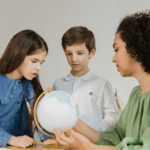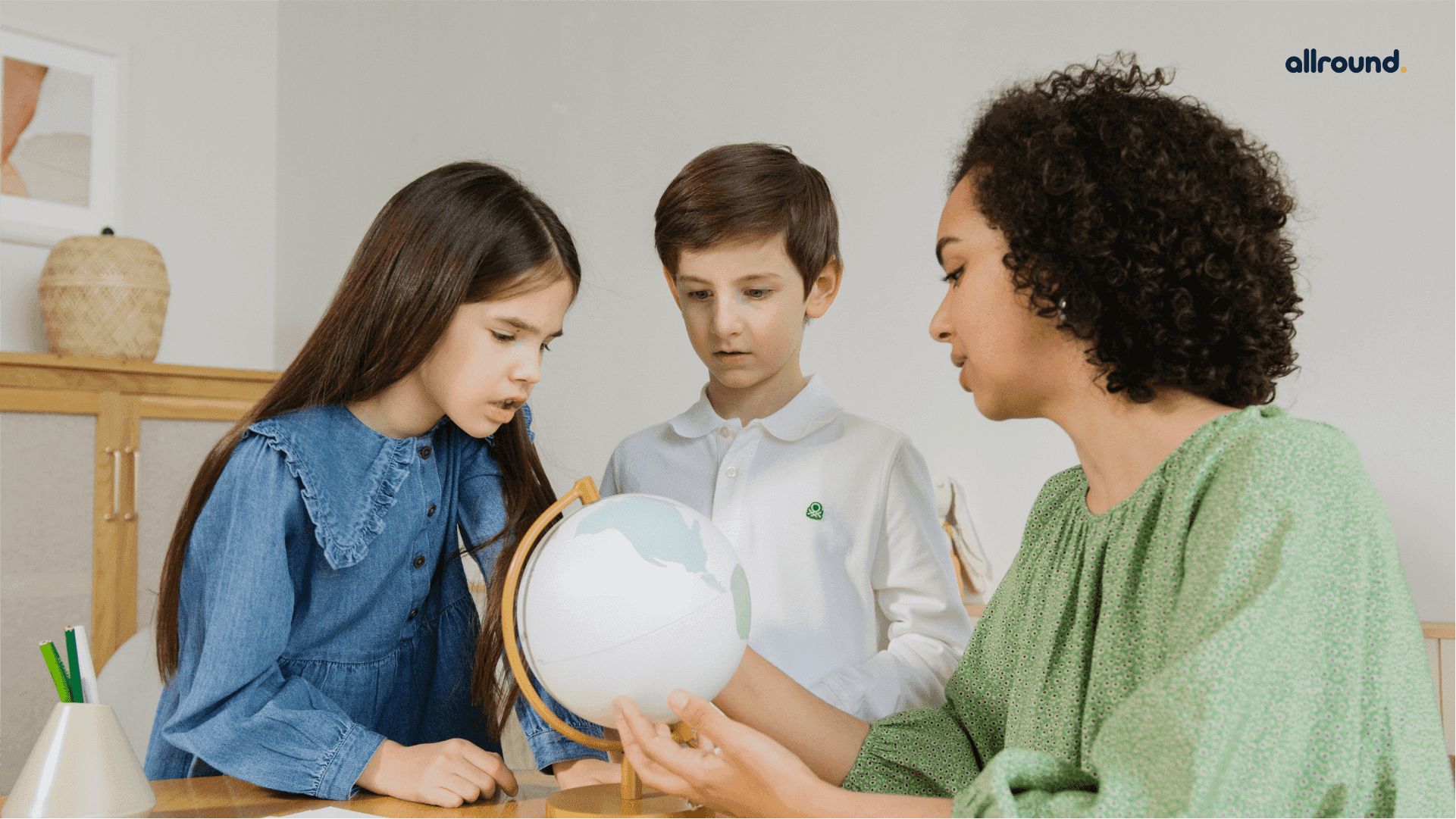Curriculum-Free Geography? How to Get it Done and Have Fun!4 min read
Not sure how to teach geography without the workbook? If so, then maybe it’s time to reassess the curriculum you’re currently using. These fun, curriculum-free ideas will help you get started without leaving the house. This is a good time to ask if it’s really necessary. Regardless of the reason, going curriculum-free can be beneficial for students. For instance, if you’re considering going to college for geography, it can be beneficial to view curriculums as tools instead of a requirement.
Getting into math or writing without the proper safety net can be overwhelming. This article can help avoid that by developing a fun, low-stress way to get started teaching Geography curriculum-free.
Contents
Teaching Geography
Geography is a great way to introduce kids to the world around them. It can also help them become more aware of the places they live in. So, if you love geography, then maybe you should consider homeschooling it. It can be so much fun!
Help kids to be aware of their surroundings
This is a great time to teach kids about the importance of paying attention and being interested in what’s happening around them. Have everyone tell you about all the places they have visited. List all the sites they would like to visit. It’s important that we show our children that we are interested in something beyond ourselves. Without paying attention, many people seem to be unaware of their lack of knowledge regarding the world around them.
Stories describing places
A good story can take you anywhere. Stories can take you anywhere. Just make sure to investigate them to make them come to life. Around the World, stories are great for younger kids. Each story has a rich history and culture, and it will teach kids about different cultures and history. There is also a parents’ guide that will help them build on the story. Stories that are full of vibrant characters and vivid colors can help kids connect with the world around them. This is one of my favorites.
Play geography puzzles and games
Geography is a great subject to play around with. Board games are a great way to keep the whole family busy and engaged. Puzzles and games provide a unique opportunity for children to develop their skills while also creating memories and building family unity. One of my favorite things about geography is that it can be used to reinforce concepts in class. We often use the same puzzle pieces to make a world map or a US map.
The genealogy approach to geography
Through genealogy, we can make history relevant and meaningful to us. This approach also helps us develop a deeper understanding of ourselves and our place in the world. This topic can introduce children to the various facets of their families. They might also start by asking about their families, their religion, and their country. By the end of the project, they might be able to expand their knowledge about other cultures and nations. Finally, Geography is covered.
Spark Curiosity with Photographs
Treat the search for clues like a scavenger hunt. You might start by choosing one person or event that’s related to your family. A photograph will get your kids started with the hunt. Eventually cover geography.
Ever wondered about homeschooling without a curriculum?
If you’re having a hard time finding the right curriculum for your child, try homeschooling without a curriculum. It can be done! Take a look at what all can be done without a curriculum at homeschooling.
- You can do a deeper study on a particular topic or book of particular interest.
- It allows for creativity, which is a vital part of critical thinking development. It is also more easily expressed through living books.
- Without the constraints of a set curriculum, children can pursue their interests.
- Adopting new strategies and techniques to meet the needs of each child. A personalized learning experience that fits to each child’s individual needs.
- Freedom to do what works best for them will teach them self-direction and a passion for learning.
- Lessons are designed to be more hands-on and engaging. It encourages students to be more flexible.
Conclusion
The world is a curriculum. It is always educational when children are fully immersed in it. It takes a lot of courage and faith to be open to new experiences. This is also a balance that needs to be worked out between being active and reactive. While it’s not a static state, homeschooling can be changed according to the needs and circumstances of your life. There are plenty of resources and ideas to help you get started without a curriculum.




